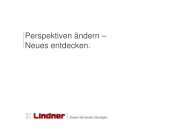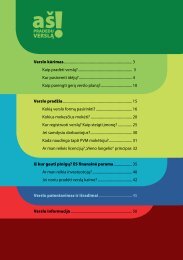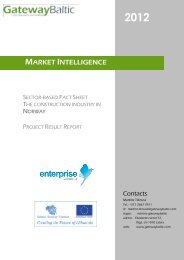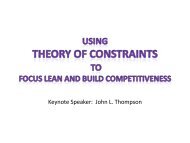ASME Boiler and Pressure Vessel Code vs. PED ... - Versli Lietuva
ASME Boiler and Pressure Vessel Code vs. PED ... - Versli Lietuva
ASME Boiler and Pressure Vessel Code vs. PED ... - Versli Lietuva
You also want an ePaper? Increase the reach of your titles
YUMPU automatically turns print PDFs into web optimized ePapers that Google loves.
1<br />
<strong>ASME</strong> <strong>Boiler</strong> <strong>and</strong> <strong>Pressure</strong> <strong>Vessel</strong> <strong>Code</strong> <strong>vs</strong>. <strong>PED</strong> <strong>and</strong> EN-st<strong>and</strong>ards<br />
<strong>and</strong> nuclear safety requirements<br />
Juha Purje<br />
Inspecta Tarkastus Oy
2<br />
<strong>Pressure</strong> Equipment Directive (<strong>PED</strong>) or <strong>ASME</strong>
3<br />
The <strong>PED</strong> shall be applied to all pressure equipment to be used in<br />
European Union except such pressure equipment that are critical to<br />
nuclear safety, they are excluded from <strong>PED</strong><br />
Article 1<br />
Scope <strong>and</strong> definitions<br />
…<br />
3. The following are excluded from the scope of this Directive:<br />
….<br />
3.8. items specifically designed for nuclear use, failure of<br />
which may cause an emission of radioactivity;<br />
Such equipment should be designed <strong>and</strong> manufactured<br />
in accordance with a specific code like<br />
– <strong>ASME</strong> <strong>Boiler</strong> <strong>and</strong> <strong>Pressure</strong> <strong>Vessel</strong> <strong>Code</strong> Section III<br />
– French RCC-M<br />
– German KTA
4<br />
Nuclear isl<strong>and</strong><br />
Many pressure equipment<br />
critical to nuclear safety<br />
Conventional isl<strong>and</strong><br />
Equipment subject to <strong>PED</strong>
5<br />
<strong>ASME</strong> <strong>Boiler</strong> & <strong>Pressure</strong> <strong>Vessel</strong> <strong>Code</strong> is an extensive set of rules on the<br />
design, manufacturing <strong>and</strong> operation of boilers <strong>and</strong> pressure vessels<br />
I Rules for Construction of Power <strong>Boiler</strong>s<br />
II Materials<br />
Part A — Ferrous Material Specifications<br />
Part B — Nonferrous Material Specifications<br />
Part C — Specifications for Welding Rods, Electrodes, <strong>and</strong> Filler Metals<br />
Part D — Properties<br />
III Rules for Construction of Nuclear Facility Components ( incl. 10 subsections)<br />
IV Rules for Construction of Heating <strong>Boiler</strong>s<br />
V Nondestructive Examination<br />
VI Recommended Rules for the Care <strong>and</strong> Operation of Heating <strong>Boiler</strong>s<br />
VII Recommended Guidelines for the Care of Power <strong>Boiler</strong>s<br />
VIII Rules for Construction of <strong>Pressure</strong> <strong>Vessel</strong>s<br />
Division 1<br />
Division 2 — Alternative Rules<br />
Division 3 — Alternative Rules for Construction of High <strong>Pressure</strong> <strong>Vessel</strong>s<br />
IX Welding <strong>and</strong> Brazing Qualifications<br />
X Fiber-Reinforced Plastic <strong>Pressure</strong> <strong>Vessel</strong>s<br />
XI Rules for Inservice Inspection of Nuclear Power Plant Components<br />
XII Rules for Construction <strong>and</strong> Continued Service of Transport Tanks
6<br />
Differences between European <strong>and</strong> American legal systems<br />
concerning pressure equipment<br />
Europe<br />
• The <strong>PED</strong> (<strong>Pressure</strong> Equipment Directive) is the law for all European Union member<br />
states<br />
• The Essential Safety Requirements of <strong>PED</strong> are often rather general but some<br />
requirements are very specific <strong>and</strong> those specific requirements shall be met.<br />
• <strong>Pressure</strong> Equipment which conform to the harmonized st<strong>and</strong>ards is presumed to<br />
conform to the Essential Safety Requirements of <strong>PED</strong>.<br />
• To follow the harmonized st<strong>and</strong>ards is the preferred method to show compliance to the<br />
<strong>PED</strong> but they are not m<strong>and</strong>atory. The manufacturer may follow any set of rules or<br />
st<strong>and</strong>ards for design <strong>and</strong> manufacturing on condition that the Essential Safety<br />
Requirements are met.<br />
USA<br />
• The <strong>ASME</strong> <strong>Boiler</strong> <strong>and</strong> <strong>Pressure</strong> <strong>Vessel</strong> <strong>Code</strong> is not a law but construction st<strong>and</strong>ard<br />
generally accepted in USA <strong>and</strong> in many other countries.
7<br />
Most important harmonized st<strong>and</strong>ards<br />
For products:<br />
EN 13445:2009 Unfired pressure vessels – Parts 1 to 8<br />
(with latest amendments)<br />
EN 13480:2012 Metallic industrial piping - Parts 1 to 8<br />
For welding procedures:<br />
EN ISO 15614-1:2004 Specification <strong>and</strong> qualification of welding procedures for metallic<br />
(with amendments) materials - Welding procedure test - Part 1: Arc <strong>and</strong> gas welding<br />
of steels <strong>and</strong> arc welding of nickel <strong>and</strong> nickel alloys<br />
For personnel qualification:<br />
EN 287-1:2011 Qualification test of welders - Fusion welding - Part 1: Steels<br />
EN 473:2008 Non-destructive testing - Qualification <strong>and</strong> certification of NDT<br />
personnel - General principles
9<br />
<strong>PED</strong> <strong>and</strong> <strong>ASME</strong> <strong>Boiler</strong> <strong>and</strong> <strong>Pressure</strong> <strong>Vessel</strong> <strong>Code</strong><br />
There are many fundamental differences between <strong>PED</strong> <strong>and</strong> <strong>ASME</strong> <strong>Code</strong>.<br />
The <strong>PED</strong> does not set any specific calculation equations, therefore the design<br />
calculation may also be based on the equations of a <strong>ASME</strong> <strong>Code</strong>.<br />
– The allowable stress specified in <strong>PED</strong> is often different from the allowable stress of<br />
<strong>ASME</strong> Section II D<br />
<strong>ASME</strong> <strong>Code</strong> allows that the manufacturer may perform many activities by himself in<br />
accordance with his quality manual, <strong>PED</strong> requires the involvement of a recognized<br />
third-party organisation in categories II, III <strong>and</strong> IV<br />
The major differences between the essential safety requirements of <strong>PED</strong> <strong>and</strong> <strong>ASME</strong><br />
<strong>Code</strong> are<br />
– acceptable materials<br />
– material properties <strong>and</strong> material certification<br />
– approval of welding procedures<br />
– approval of <strong>and</strong> welders <strong>and</strong> NDT-personnel<br />
Other differences<br />
– hazard analysis is required in <strong>PED</strong><br />
– pressure vessel test pressure<br />
– <strong>PED</strong> requires that the manufacturer must prepare the operating instructions <strong>and</strong><br />
supply them with the pressure equipment to the user
10<br />
<strong>PED</strong> <strong>and</strong> <strong>ASME</strong><br />
<strong>ASME</strong> <strong>Code</strong> is m<strong>and</strong>atory in USA <strong>and</strong> Canada, a pressure vessel that will be used in<br />
USA or Canada shall be code stamped. This requires the involvement of an Authorized<br />
Inspection Agency <strong>and</strong> certification by an Authorized Inspector.<br />
Many other countries have also accepted <strong>ASME</strong> <strong>Code</strong>. In these countries the <strong>ASME</strong><br />
<strong>Code</strong> is applied in many different ways, only seldom to the full extent of <strong>ASME</strong> <strong>Code</strong>.<br />
– the manufacturer does not have the <strong>ASME</strong> Certificate of Authorization<br />
– there is no involvement of <strong>ASME</strong> AIA or AI, therefore no <strong>ASME</strong> stamp<br />
– only design calculations are made in accordance with the <strong>ASME</strong> code, <strong>and</strong> this is<br />
because the designer has suitable software.<br />
There are many manufacturers <strong>and</strong> also some notified bodies who think that<br />
1. The <strong>ASME</strong> <strong>Code</strong> has been widely used for many decades<br />
2. <strong>Pressure</strong> vessels that have been designed <strong>and</strong> manufactured in accordance with<br />
<strong>ASME</strong> <strong>Code</strong> have been proven to be safe<br />
� As they have been proven to be safe they meet the essential safety requirements<br />
of <strong>PED</strong><br />
This is not true. The <strong>PED</strong> is European Union law that shall be followed to the letter.
15<br />
<strong>ASME</strong> material specifications are not harmonized material st<strong>and</strong>ards.<br />
The suitability of such a material shall be assessed as Particular Material Appraisal.<br />
General rule :<br />
Material that has been supplied in accordance with the minimum requirements of <strong>ASME</strong>material<br />
specification does not meet the essential safety requirements of <strong>PED</strong>.<br />
– A certificate of specific product control is not a m<strong>and</strong>atory requirement for many <strong>ASME</strong>-materials.<br />
– The organization responsible for material certification may also be other than material manufacturer.<br />
– Material traceability is endangered because the <strong>ASME</strong> material specification may not require the<br />
products to be marked with heat or batch number.<br />
– Many <strong>ASME</strong> pressure vessel carbon steel specifications do not have any requirements for minimum<br />
impact energy <strong>and</strong> even if it is specified the required value is less than 27 J.<br />
– The tensile strength properties at elevated properties are not specified in the material specification.<br />
There are even some <strong>ASME</strong> material specifications that do not specify any minimum tensile strength<br />
properties.<br />
– <strong>ASME</strong>-material specifications often allow such high amount of C, P <strong>and</strong> S that at the extreme highquality<br />
welding would be difficult <strong>and</strong> impact strength non-existent.<br />
If the pressure equipment manufacturer specifies an <strong>ASME</strong> material he shall set supplementary<br />
requirements when purchasing the material like:<br />
– A requirement for the certificate of specific product control (EN 10204:2004 3.1 or 3.2)<br />
– A requirement that only material manufacturer may certify the material<br />
– A requirement of material markings to guarantee traceability with the certificate<br />
– To specify properties that are stricter than the minimum requirements of <strong>ASME</strong> material specification<br />
like manufacturing methods or limitations for the amount of C, P <strong>and</strong> S
16<br />
<strong>ASME</strong> <strong>vs</strong>. EN<br />
Chemical composition of some common carbon steels<br />
Steel R p (N/mm²) R m (N/mm²) C max(%) P max(%) S max(%)<br />
SA-105 250 480 - 0,35 0,035 0,040<br />
SA-106 Grade B 240 415 - 0,30 0,035 0,035<br />
SA-234 WPB 240 415 - 585 0,30 0,050 0,058<br />
SA-333 Grade 6 240 415 - 0,30 0,025 0,025<br />
SA-516 Grade 70 260 485 - 620 0,30 0,035 0,035<br />
P280GH EN 10222-2 255 460 - 580 0,20 0,025 0,015<br />
P265GH EN 10216-2 265 410 - 570 0,20 0,025 0,020<br />
S235 EN 10253-1 235 360 - 500 0,16 0,030 0,025<br />
P265NL EN 10216-4 265 410 - 570 0,20 0,025 0,020<br />
P295GH EN 10028-2 290 460 - 580 0,20 0,025 0,010
17<br />
Design calculation<br />
The theory of stress <strong>and</strong> strain is similar everywhere but practical applications are<br />
somewhat different depending of the code.<br />
Minimum wall thickness of cylindrical shell is defined in the following equations<br />
<strong>ASME</strong> Section VIII Div.1 EN 13445-3<br />
t or e = minimum thickness<br />
P = design pressure<br />
R = inside radius of shell (R = D i / 2)<br />
D i = inside diameter of shell (D i = 2•R)<br />
E or z = weld efficiency factor or joint coefficient<br />
S or f = stress value = maximum allowable membrane stress
18<br />
Allowable stress of ferritic steel<br />
<strong>ASME</strong> Section VIII Division 1<br />
• Allowable stress is specified in <strong>ASME</strong><br />
Section II D Table 1A<br />
• The maximum allowable stress value is<br />
the smaller of<br />
– the specified minimum tensile<br />
strength at room temperature divided<br />
by 3.5<br />
– two-thirds of the yield strength at<br />
temperature<br />
• The <strong>ASME</strong>-material specifications<br />
specify the minimum strength values at<br />
room temperature only.<br />
– The yield strength at elevated<br />
temperature is based on statistical<br />
values, those values are not<br />
guaranteed minimum values<br />
<strong>PED</strong> <strong>and</strong> EN-st<strong>and</strong>ards<br />
The smaller of the values<br />
• 2/3 R e/t , yield limit at design temperature<br />
or<br />
• 5/12 R m/20 , ultimate strength at + 20 °C<br />
Strength values at room temperature <strong>and</strong><br />
at elevated temperatures are specified in<br />
the applicable harmonized material<br />
st<strong>and</strong>ard. Those values are to be<br />
considered as guaranteed values but<br />
tensile testing at elevated temperature is<br />
not m<strong>and</strong>atory
19<br />
Allowable stress of similar steels, <strong>ASME</strong> <strong>vs</strong>. EN<br />
<strong>ASME</strong> Section VIII Division 1 steel SA-516 Grade 70<br />
EN 13445-3 steel P295GH EN 10028-2<br />
N/mm²<br />
R m / 2,4<br />
N/mm2<br />
R m / 3,5<br />
350<br />
300<br />
250<br />
200<br />
150<br />
100<br />
50<br />
0<br />
20 50 100 150 200 250 300 350 400<br />
Rp0,2 P295GH 290 280 264 244 225 206 189 175 160<br />
P295GH <strong>PED</strong> 191 191 176 163 150 137 126 117 107<br />
SA-516 Grade70 138 138 138 138 138 138 135 129 101<br />
Degrees C<br />
Rp0,2 P295GH<br />
P295GH <strong>PED</strong><br />
SA-516 Grade70
20<br />
Yield strength of steel <strong>ASME</strong> SA-106 B (N/mm²) in accordance with Section II D<br />
Table Y-1 <strong>vs</strong>. similar European steel specifications or previous approvals<br />
300<br />
250<br />
200<br />
150<br />
100<br />
50<br />
0<br />
20 50 100 150 200 250 300 350 400 450<br />
A106B NGS 141 240 229 215 202 185 164 144 127 115 106<br />
St 45.8 DIN 17175 245 195 175 155 135 130 125<br />
P265GH EN 10216-2 265 235 226 213 192 171 154 141 134 128<br />
A106B <strong>ASME</strong> Y-1 241 235 221 214 207 199 188 177 167 158
21<br />
NOTES TO TABLE Y-1<br />
(b) The tabulated values of yield strength values are those which the Committee believes<br />
are suitable for use in design calculations. At temperatures above room temperature, the<br />
yield strength values correspond to the yield strength trend curve adjusted to the minimum<br />
specified room temperature yield strength. The yield strength values do not correspond<br />
exactly to ”minimum” as this term is applied to a statistical treatment of a homogenous set<br />
of data. Neither the <strong>ASME</strong> Material Specifications nor the rules of Section I, Section III, or<br />
Section VIII require elevated temperature testing for yield strengths of production material<br />
for use in <strong>Code</strong> components. It is not intended that results of such tests, if performed, be<br />
compared with these tabulated yield strength values for <strong>ASME</strong> <strong>Code</strong> acceptance<br />
/rejection purposes for materials. If some elevated temperature test results on production<br />
material appear lower than the tabulated values by a large amount (more than the typical<br />
variability of material <strong>and</strong> suggesting the possibility of some error), further investigation by<br />
retest or other means should be considered.
22<br />
<strong>ASME</strong> <strong>vs</strong>. <strong>PED</strong> in manufacturing<br />
<strong>ASME</strong> <strong>PED</strong><br />
Authorized manufacturer required not required<br />
Quality Manual required in modules D, E, H<br />
Qualification <strong>and</strong> approval manufacturer Third party in categories<br />
of welding procedures in accordance with II, III <strong>and</strong> IV in accordance<br />
<strong>and</strong> welders <strong>ASME</strong> Section IX with EN-st<strong>and</strong>ards<br />
Approval of manufacturer or Third party in categories<br />
NDT-personnel NDT-subcontractor in III <strong>and</strong> IV in accordance<br />
accordance with SNT-TC-1A with EN 473<br />
Materials Listed in <strong>ASME</strong> Section II Listed in harmonized<br />
or st<strong>and</strong>ards or<br />
"recertification" particular material appraisal<br />
Material certificates required for plates required for all materials<br />
for other types of materials typically EN 10204 3.1 <strong>and</strong><br />
the marking as specified in material manufacturer shall<br />
material st<strong>and</strong>ard is sufficient operate a quality system
24<br />
<strong>PED</strong> Annex I Essential Safety Requirements<br />
3.1.2. Permanent joining<br />
For pressure equipment, permanent joining of components which contribute to the pressure<br />
resistance of equipment <strong>and</strong> components which are directly attached to them must be carried out<br />
by suitably qualified personnel according to suitable operating procedures.<br />
For pressure equipment in categories II, III <strong>and</strong> IV, operating procedures <strong>and</strong> personnel<br />
must be approved by a competent third party which, at the manufacturer's discretion, may be:<br />
- notified body,<br />
- a third-party organization recognized by a Member State as provided for in Article 13.<br />
To carry out these approvals the third party must perform examinations <strong>and</strong> tests as set out<br />
in the appropriate harmonized st<strong>and</strong>ards or equivalent examinations <strong>and</strong> tests or must have<br />
them performed.<br />
3.1.3. Non-destructive tests<br />
For pressure equipment, non-destructive tests of permanent joints must be carried out by suitable<br />
qualified personnel. For pressure equipment in categories III <strong>and</strong> IV, the personnel must be<br />
approved by a third-party organization recognized by a Member State pursuant to Article 13.<br />
A problem for manufacturers outside of European Union :<br />
The notified bodies or third-party organisations are far away !
25<br />
Transfer of Welding Procedure Qualification Records<br />
<strong>ASME</strong> IX:<br />
When a manufacturer or contractor is acquired by a new owner, the PQRs <strong>and</strong><br />
WPSs may be used by the new owner without requalification, provided that the<br />
new owner takes responsibility for the WPSs <strong>and</strong> PQRs <strong>and</strong> the source of the<br />
PQRs is identified as being from the former manufacturer.<br />
EN 15614-1:<br />
A qualification of a pWPS by a welding procedure test obtained by a manufacturer<br />
is valid for welding in workshops or sites under the same technical <strong>and</strong> quality<br />
control of the manufacturer.<br />
– Welding is under the same technical <strong>and</strong> quality control when the manufacturer<br />
who performed the welding procedure test retains complete responsibility<br />
for all welding carried out to it.
26<br />
Welder Qualification<br />
The principles of welder qualification in <strong>ASME</strong> Section IX <strong>and</strong> EN 287-1 are<br />
the same.<br />
Each welder or welding operator shall be qualified for each welding process<br />
<strong>and</strong> material to be used in production welding.<br />
There are some variations in the test pieces <strong>and</strong> in the range of<br />
qualification.<br />
EN 287-1 is a general welder qualification st<strong>and</strong>ard. It may be applied in<br />
any industry, not only for welding pressure equipment.<br />
The <strong>PED</strong> sets the additional requirement that the welder’s test shall be<br />
witnessed <strong>and</strong> approved by a notified body or by a recognized third-party<br />
organization.
27<br />
EN 287-1 Annex C (informative)<br />
Job knowledge<br />
The test of job knowledge is recommended, but it is not m<strong>and</strong>atory.<br />
However, some countries can require that the welder undergoes a test of job<br />
knowledge. If the job knowledge test is carried out, it should be recorded on the<br />
welder’s qualification test certificate.<br />
This annex outlines the job knowledge that a welder should have to ensure that<br />
procedures are followed <strong>and</strong> common practices are complied with. The job knowledge<br />
indicated in this annex is only pitched at the most basic level.<br />
Owing to different training programmes in various countries, it is only proposed to<br />
st<strong>and</strong>ardize general objectives or categories of job knowledge. The actual question used<br />
should be drawn up by the individual country, but should include questions on areas<br />
covered in C.2, relevant to the qualification test of welders.<br />
The actual tests of a welder’s job knowledge can be given by any of the following<br />
methods or combinations of these methods:<br />
a) written objective tests (multiple choice);<br />
b) oral questioning following a set of written questions;<br />
c) computer testing;<br />
d) demonstration/observation testing following a written set of criteria.<br />
The test of job knowledge is limited to the matters related to the welding process used in<br />
the test.
28<br />
Expiration of Welder Qualification<br />
<strong>ASME</strong> IX<br />
The qualification of a welder is valid without time limit on condition that<br />
– he has welded on that process during a period of 6 months<br />
– there is no reason to question his ability to weld<br />
EN 287-1<br />
The welder's qualification test certificate is valid for a period of two years<br />
on condition that the employer can confirm every six months that the<br />
welder has been welding within the range of qualification with satisfactory<br />
results.<br />
Welder's qualification test certificates can be prolonged every two years<br />
by the examiner or examining body.
29<br />
<strong>ASME</strong> <strong>vs</strong>. EN<br />
Non-destructive testing of welds<br />
The amount of non-destructive tests depends of the welding efficiency factor<br />
used in design calculations<br />
E or z <strong>ASME</strong> Section VIII Div.1 <strong>PED</strong> EN 13445-5<br />
1,0 longitudinal transversal NDT <strong>and</strong> destructive longitudinal transversal<br />
100 % spot tests to confirm<br />
that no significant<br />
defects exist<br />
100 % 25 - 100 %<br />
0,85 spot spot<br />
longitudinal transversal longitudinal transversal<br />
min. 1 test 10 - 25 % 2 - 10 %<br />
per 15 m 0 %<br />
0,7 0 % 0 % 0 %
30<br />
<strong>Pressure</strong> test <strong>ASME</strong> <strong>vs</strong>. <strong>PED</strong><br />
<strong>ASME</strong> Section VIII Div.1<br />
1,3 • maximum allowable pressure<br />
– In most cases the specified<br />
materials do not influence the<br />
test pressure<br />
<strong>PED</strong> <strong>and</strong> EN 13445-5<br />
Higher of the values<br />
− 1,43 • maximum allowable pressure<br />
− 1,25 • maximum allowable pressure •<br />
f a is the nominal design stress of the<br />
material at the test temperature;<br />
f Td is the nominal design stress of the<br />
material at design temperature<br />
�Typical test pressure for a pressure vessel<br />
that is designed to operate at elevated<br />
temperature is 1,5 – 2,0 • maximum<br />
allowable pressure
31<br />
<strong>ASME</strong> Section VIII Div. 1 <strong>vs</strong>. EN 13445 / <strong>PED</strong><br />
<strong>ASME</strong> Section VIII Div. 1<br />
+ Cheaper materials<br />
+ Extensive selection of materials, short<br />
delivery times<br />
+ Plenty of calculation programs<br />
+ Proven <strong>and</strong> familiar code, simple<br />
determination of test pressure<br />
+ The manufacturer qualifies his welding<br />
procedures, welders <strong>and</strong> NDEpersonnel<br />
+ Cheaper costs of NDE<br />
EN 13445<br />
+ Meets the <strong>PED</strong> requirements<br />
+ In most cases less material is required<br />
+ No quality manual is required in module G.<br />
The manufacturing may begin if the<br />
welding procedures <strong>and</strong> personnel are<br />
qualified.<br />
+ Many notified bodies<br />
+ The manufacturer may inspect <strong>and</strong> certify<br />
the products by himself in modules A, A1,<br />
C1, D, D1, E, E1 <strong>and</strong> H without direct<br />
involvement of the third party
32<br />
<strong>ASME</strong> <strong>Boiler</strong> & <strong>Pressure</strong> <strong>Vessel</strong> <strong>Code</strong> <strong>vs</strong>.<br />
<strong>Pressure</strong> Equipment Directive (<strong>PED</strong>)<br />
• If a boiler or pressure vessel is to be delivered to European Union it<br />
shall be manufactured in accordance with <strong>PED</strong> <strong>and</strong> CE-marked.<br />
• If a boiler or pressure vessel is to be delivered to USA or Canada it shall<br />
be manufactured in accordance with <strong>ASME</strong> <strong>Boiler</strong> & <strong>Pressure</strong> <strong>Vessel</strong><br />
<strong>Code</strong> <strong>and</strong> <strong>ASME</strong>-stamped.<br />
• Both rules are in practice m<strong>and</strong>atory in their own area, there is no<br />
possibility for a compromise. The manufacturer shall accept the<br />
customer’s requirements.








